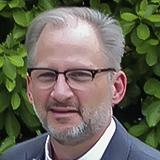Dominic Cappolletti, CCP lectures and discusses the current state of Ventricular Assist Devices and Total Artificial Hearts.
"Ventricular Assist Devices (VADs): The Good, The Bad, and The Ugly"
Introduction Embark on an educational journey with Dominic Cappolletti, CCP, as he unveils the complexities and pivotal developments of Ventricular Assist Devices (VADs) in contemporary medicine. This comprehensive lecture delves deep into the operational mechanics, clinical benefits, challenges, and the broader societal implications of VADs. Designed for medical professionals, students, and anyone intrigued by the evolution of cardiac support technologies, this presentation offers a balanced perspective on the life-altering impacts of VADs.
Historical Context The narrative begins with a retrospective look at the inception and evolution of mechanical circulatory support. Starting from the early 20th century, the discussion traces key milestones such as the invention of the first heart-lung machine by Dr. John Gibbon in 1953 and progresses through decades of innovation. Significant advancements are highlighted, including Dr. Michael DeBakey's pioneering work in the development of implantable VADs during the 1960s, setting the stage for the sophisticated systems currently in use.
The Good: Saving Lives and Extending Hope Ventricular Assist Devices have revolutionized treatment options for patients with severe heart conditions, particularly those awaiting transplants. This segment of the lecture focuses on the life-saving capabilities of VADs, illustrating through patient case studies and clinical data how these devices serve as crucial bridges to transplantation and recovery. The benefits extend beyond mere survival, improving quality of life and functional capacity, which are discussed in detail with supporting statistics.
The Bad: Navigating Complications Despite their benefits, VADs introduce a range of complications. This part of the lecture critically examines the risks associated with VAD implantation, including infection, device malfunction, and the physiological toll on patients. Specific complications such as bleeding, thrombosis, and the impact of long-term device dependency are explored through clinical anecdotes and scientific studies, providing a nuanced understanding of the challenges faced by patients and healthcare providers.
The Ugly: Ethical and Economic Dilemmas The lecture takes a sobering turn to discuss the ethical and economic dilemmas posed by VAD technology. Issues such as the allocation of medical resources, the cost of VAD operations, and the ethical considerations in determining candidacy for VAD support are rigorously analyzed. This section encourages a reflective dialogue on the disparities in access to such technologies and the moral obligations of the medical community in the face of advanced, yet expensive, life-sustaining treatments.
Future Prospects and Technological Innovations Looking forward, the lecture shifts to the promising advancements in VAD technology and research. Innovations aimed at reducing the size and invasiveness of these devices are discussed, alongside the development of fully implantable systems that could potentially eliminate the need for external drivelines, thereby reducing infection risks and enhancing patient mobility and comfort. The potential for integrating artificial intelligence to improve device functionality and patient monitoring is also considered, showcasing the cutting-edge of cardiac care technology.
Conclusion Dominic Cappolletti’s lecture, "Ventricular Assist Devices: The Good, The Bad, and The Ugly," offers a profound insight into the intricate balance of benefits and challenges presented by VADs. It serves as a call to action for ongoing innovation and ethical consideration in the development and deployment of these life-saving devices. Attendees will gain a comprehensive understanding of the past, present, and future of VADs, equipped with the knowledge to navigate the complexities of modern cardiac care.

I graduated from Butler University in 1988 with a degree in Zoology/Pre-Med. I then completed training as a registered respiratory therapist, and practiced for about 5 years